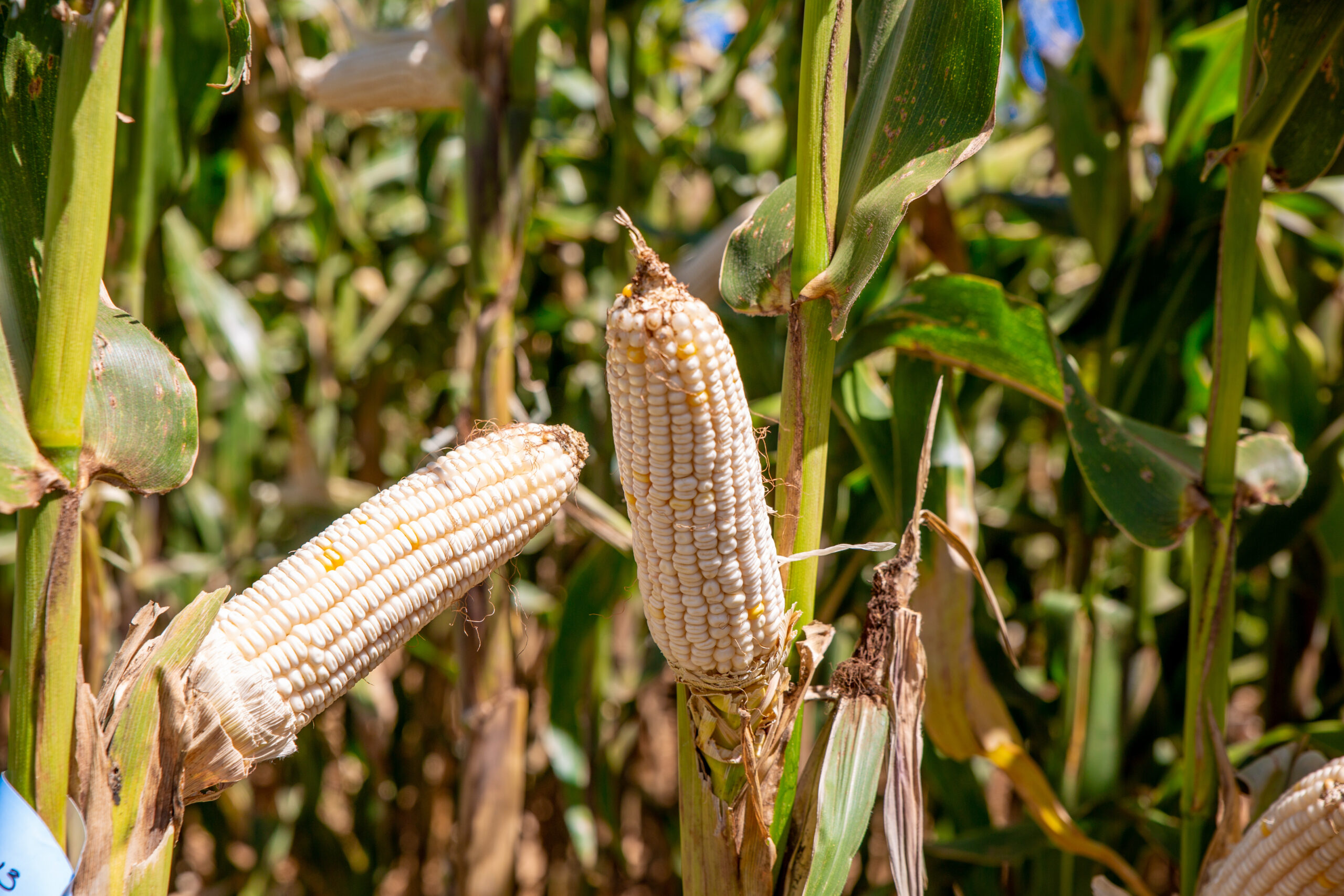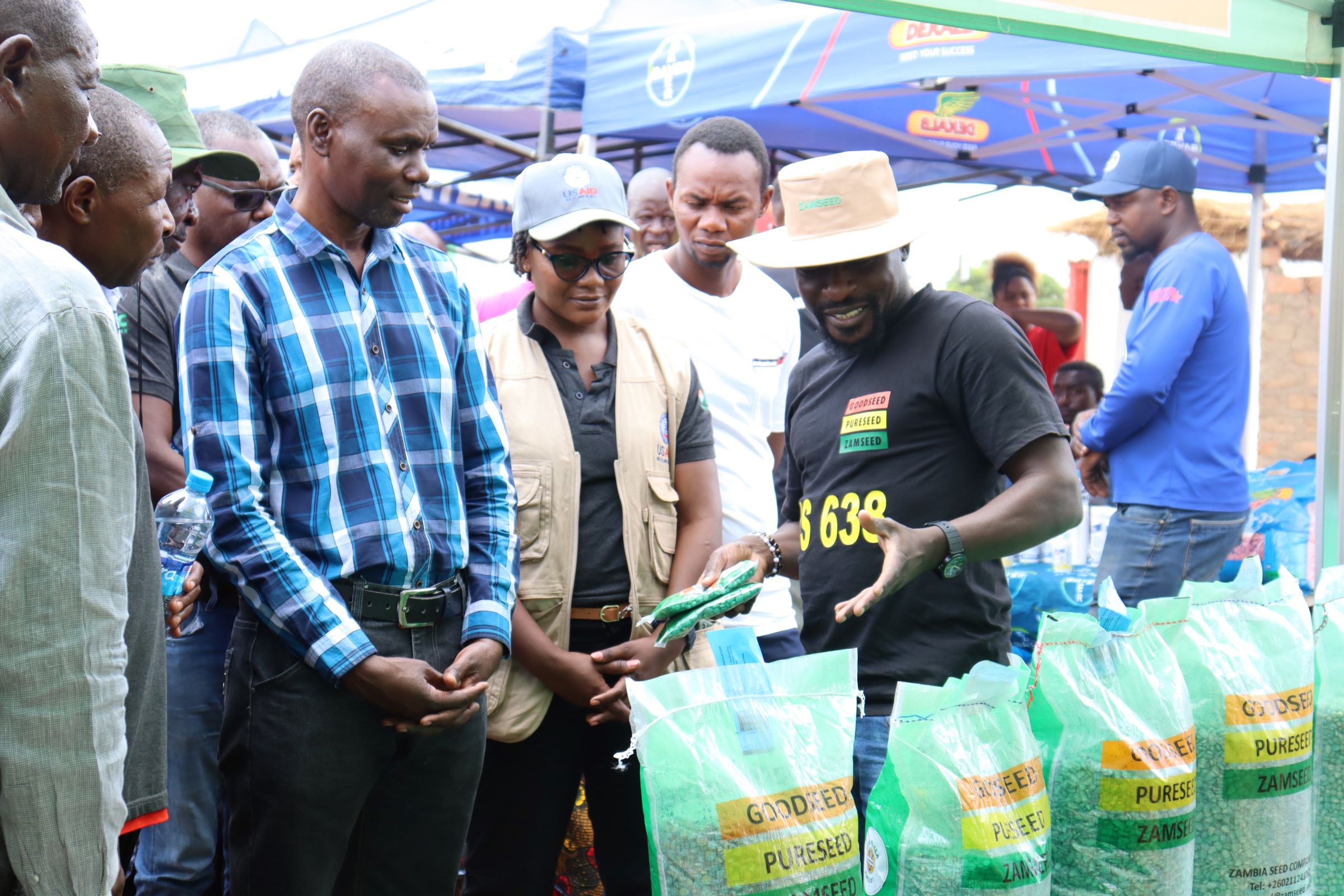In southern Africa, maize is a cultural and economic staple, as well as a daily necessity for many households. The saying, “maize is food; food is maize,” particularly holds in Zambia, where most meals are often incomplete without nshima, a thick maize porridge that can be accompanied by various relishes. Behind this crop lies a quiet evolution driven by CGIAR’s focus on developing multi-stress and climate-resilient maize varieties to help smallholder farmers tide over the impacts of climate change.
Improved germplasm, in particular drought-tolerant maize varieties, is a proven adaptation strategy in the face of climate change. CGIAR centers, such as CIMMYT, have collaborated with national partners to develop and commercialize over 200 climate-resilient maize varieties, addressing the challenges faced by smallholders across southern Africa. A recent CIMMYT-led study set out to understand the adoption and impact of the improved CGIAR maize varieties among smallholder farmers in Zambia, where non-CGIAR maize varieties still prevail, highlighting the urgent need for broader outreach and adoption.
Zambia – A case in point
Zambia is a major maize seed hub for the region, producing surplus for export. The private sector leads this success story, with CGIAR-derived maize varieties making up only 28% of the released varieties in the country. Despite this, these CGIAR varieties remain highly favored by farmers, indicating a deeper trust in CGIAR varieties, which are recognized for their performance under stress and adaptability to local conditions. This makes Zambia a valuable testing ground.
“Zambia is an interesting case to study the impacts of CGIAR maize varieties on livelihoods, not only because of the dominance of the private sector, but also because the country has an intensive data set that allows us to study impacts at the smallholder household level. We are grateful to the Indaba Agriculture Policy Research Institute (IAPRI) and other stakeholders who collected these valuable data,” said Hambulo Ngoma, CIMMYT Agricultural Economist in Southern Africa and lead author of the study.
What the data reveals
Using a robust panel dataset from 21,000 maize-growing households between 2012 and 2019, CIMMYT researchers focused on the adoption of CGIAR-related maize varieties and their impacts on maize yield and poverty. By 2019, 24% of smallholders were growing CGIAR-related maize varieties on about 225,000 hectares, resulting in a yield increase of 26% to 35% compared to non-CGIAR seeds. These marginal effects are significant, especially under variable climate conditions. However, the impact on poverty was more modest, with a 2% to 10% reduction in poverty depth for households using CGIAR maize. While these improvements indicate progress towards SDG 2, the findings suggest that enhancing agricultural productivity alone is insufficient; additional strategies, such as improved access to credit and markets, are necessary for broader poverty alleviation.
The dynamics of seed choice among Zambian farmers reflect a mix of pragmatism and personal preference. From 2012 to 2019, the number of CGIAR maize varieties in use increased from 18 to 30. They were primarily hybrids, though open-pollinated varieties (OPVs) remained important for resource-limited farmers.
Authors found that one-third of farmers consistently opted for hybrids across all survey years, while others moved between hybrids and OPVs, based on market and environmental factors. Despite a rise in CGIAR maize cultivation by 2018, the proportion of land devoted to it slightly decreased from 65% to 59%, indicating cautious experimentation. Gender and farm size influenced adoption rates, with 25% of male-headed households and 21% of female-headed households adopting CGIAR maize. While adoption grew among both small and larger farms, the bigger increases were among farmers cultivating more than five hectares. “These patterns signal a need for improved targeting of agricultural innovations, as access to quality seeds and markets is unevenly distributed,” said Hambulo.
Real impact, absolute limits
One of the key takeaways from the study is that while improved maize varieties can enhance yields, they are just one part of the solution to poverty. While these varieties can provide short-term relief, they do not significantly lift most households out of chronic poverty, highlighting the need for comprehensive poverty reduction support systems, including access to credit, functioning markets, rural infrastructure, and social safety nets. This aligns with findings from across Africa. In Ethiopia, improved maize has been linked to better food security. In Zimbabwe and Malawi, drought-tolerant varieties have helped buffer farmers against climate shocks. But in each case, the impact depends heavily on what’s happening around the seed, from extension services, input availability, and broader development policy.
Importantly, the CIMMYT study improves prior research by employing robust methodologies and utilizing nationally representative data, thereby reinforcing the importance of considering the surrounding agricultural context, including extension services and development policies, to accurately assess the impact of these innovations on food security across different African countries.
Part of a larger picture
The story of maize in Zambia reflects the broader journey of African agriculture transformation, showcasing resilience and innovation among farmers who thoughtfully evaluate and assess the impacts of technology. The study highlights several key points for donors and development partners.
First, the positive yield and poverty effects in the research study demonstrate that investing in improved germplasm pays off. This is aligned with earlier CIMMYT-led studies showing that every dollar spent on CGIAR maize breeding returns $12 to $17. This demonstrates a compelling case for continued support. Yet, one must keep in mind that yields do not automatically translate into economic benefits. The focus should be on ensuring that climate-resilient maize varieties are accessible and supported for those who need them the most.
Second, the study shows that climate-resilient varieties are not just theoretical tools. They are being adopted at scale, even in competitive markets, and they are helping farmers manage climate risk and boost production. Third and crucially, the research reinforces that the seed alone is not enough. Lasting change requires integrating improved genetics with better markets, policies, and access to knowledge and finance.


 Capacity development
Capacity development